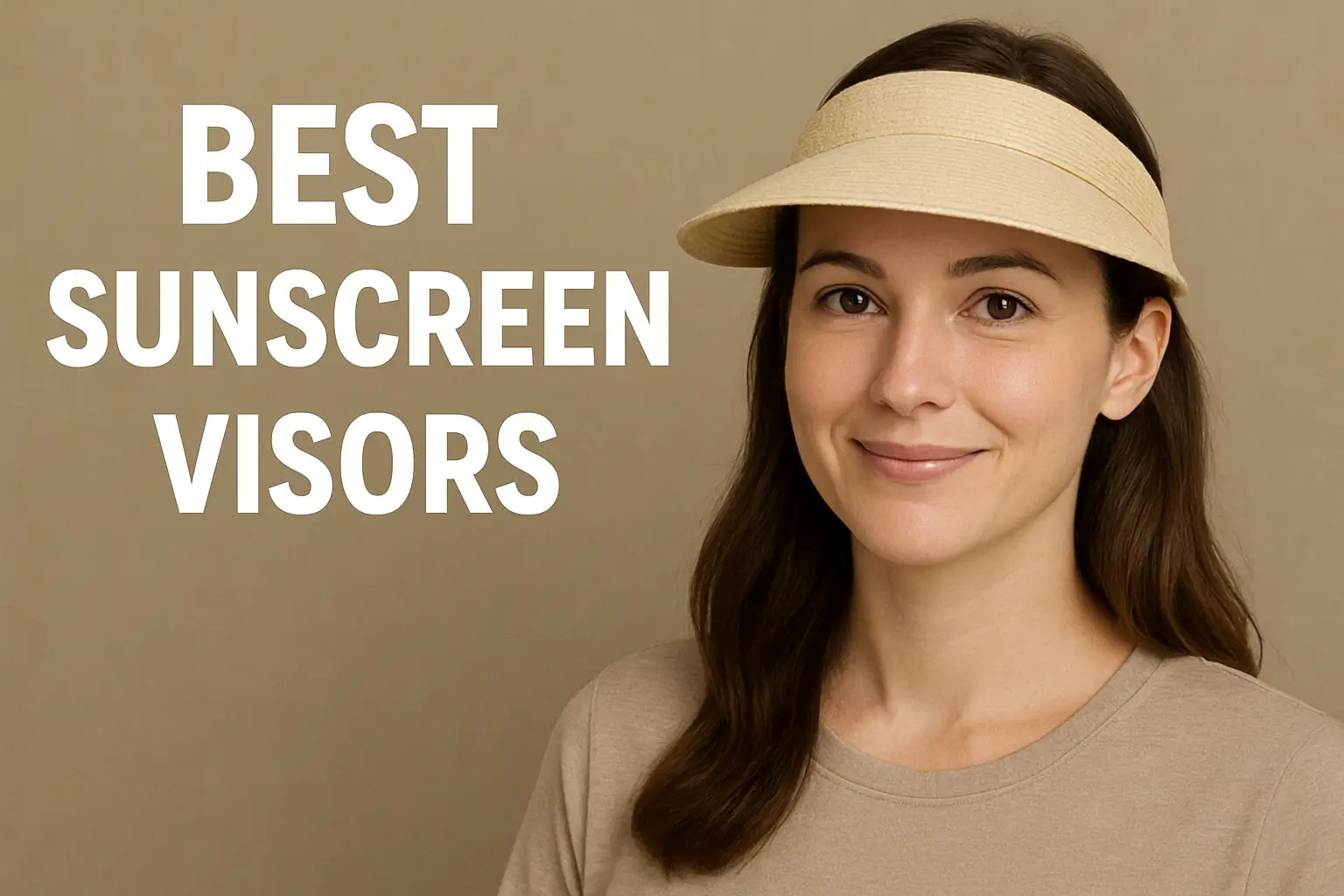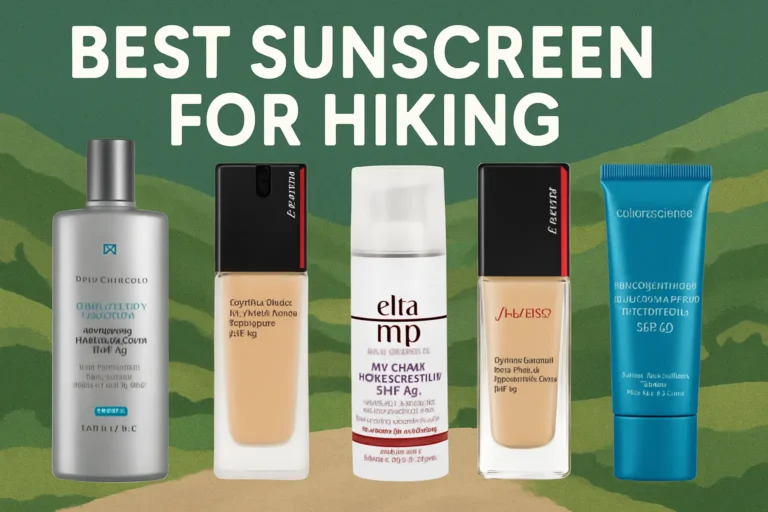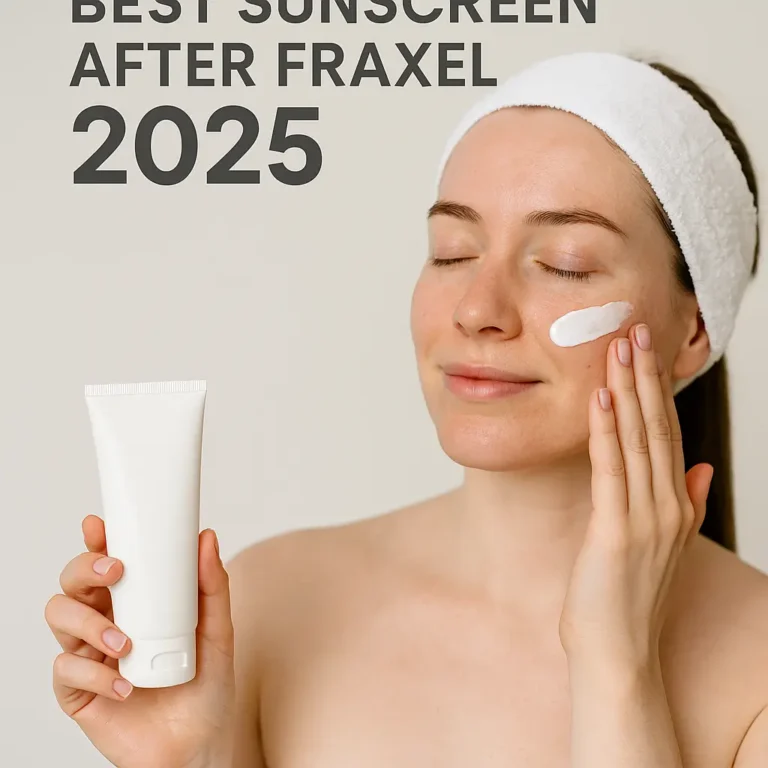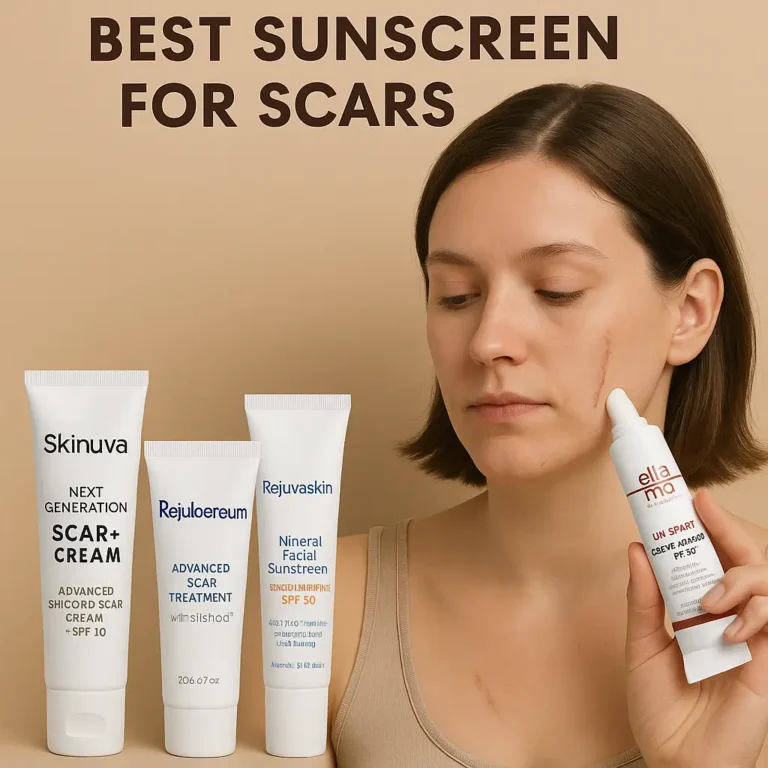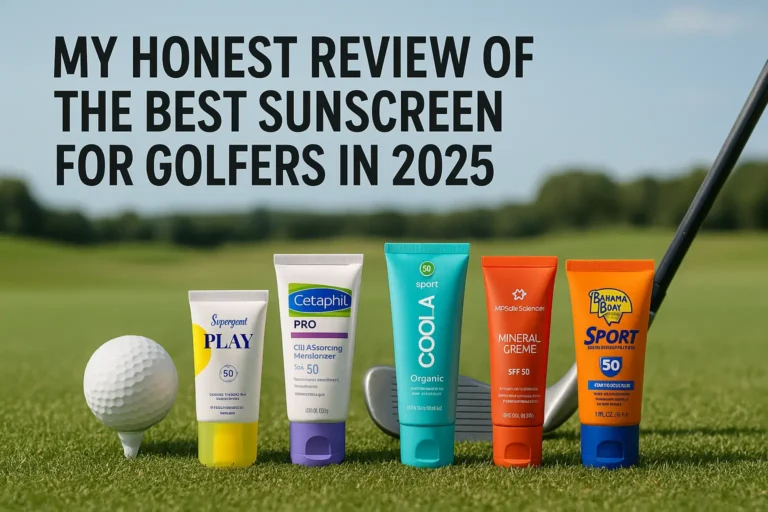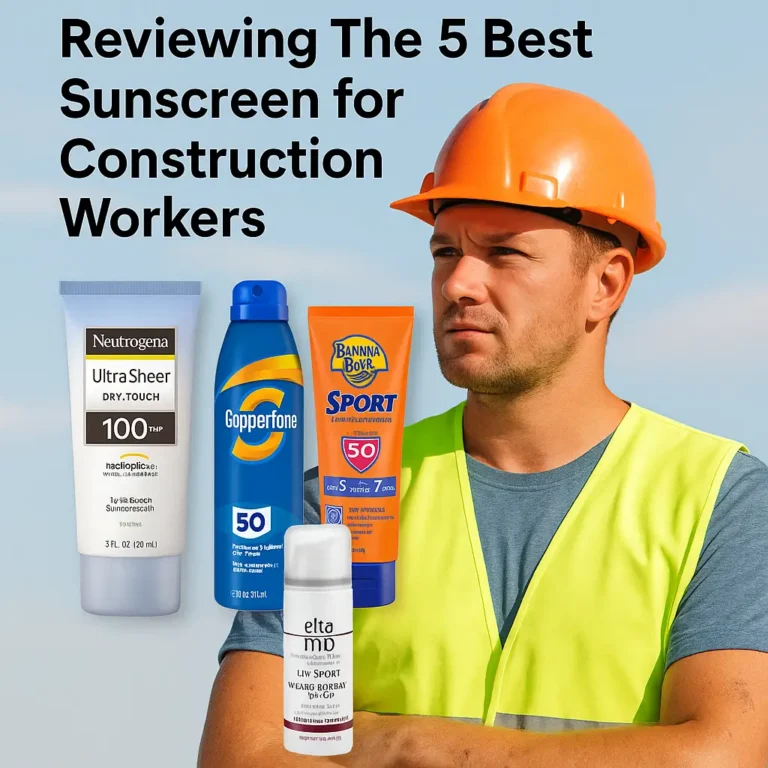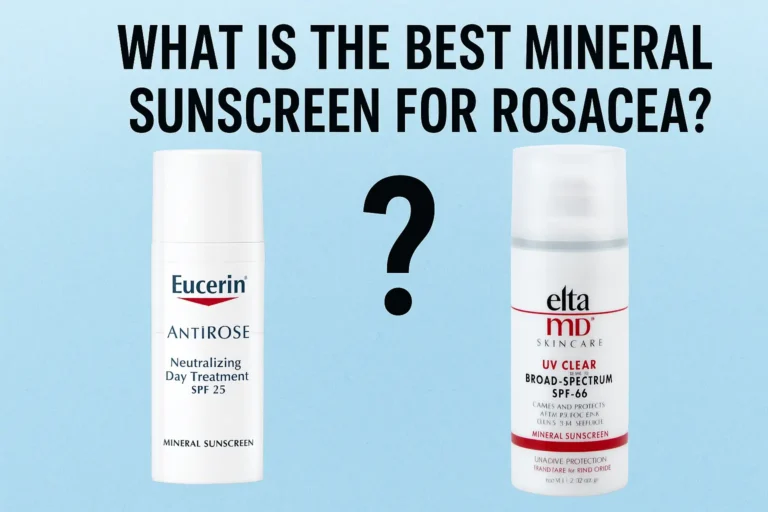Best Sunscreen Visors in 2025
Standing at the sidelines of my daughter’s soccer tournament last July, I watched a fellow parent reapply sunscreen to her face for the third time in two hours. Her baseball cap provided zero protection for her face, and the greasy sunscreen kept dripping into her eyes every time she cheered.
That’s when I discovered sunscreen visors—and honestly, they’ve transformed how I approach outdoor sun protection.
If you’re tired of constantly reapplying facial sunscreen, dealing with greasy residue, or worrying about inadequate coverage, a sunscreen visor might be exactly what you need. But with dozens of options flooding the market, how do you choose the right one?
Today, I’m breaking down everything you need to know about sunscreen visors, including my hands-on testing of the top products available in 2025.
Key Takeaways
- Sunscreen visors provide 360-degree face protection without chemicals or reapplication
- Quality visors block 98-99% of UVA and UVB rays (equivalent to SPF 50+)
- Best options combine UV-blocking materials with wide coverage and adjustability
- Ideal for sports, gardening, beach activities, and anyone with sensitive skin
- Top picks range from $18-$65 depending on features and materials
- Look for UPF 50+ rating, adjustable fit, and breathable fabric
What Is a Sunscreen Visor?
A sunscreen visor is a wide-brimmed headpiece designed to shield your face and neck from harmful UV rays without the need for chemical sunscreen application. Unlike standard visors that only protect your forehead, sunscreen visors feature extended brims and often include side flaps or neck protection.
How Sunscreen Visors Work
The magic lies in the fabric technology:
UPF-Rated Fabric – Specially woven materials that block UV penetration Wide Coverage Design – Extended brims (typically 4-7 inches) that shade the entire face Reflective Coatings – Some premium models include UV-reflective treatments Dense Weave Patterns – Tightly woven fabrics that prevent UV transmission
Unlike sunscreen that wears off, washes away with sweat, or requires reapplication every two hours, a quality sunscreen visor provides constant protection as long as you’re wearing it.
Why Choose a Sunscreen Visor Over Traditional Sun Protection?
After testing sunscreen visors for over a year, I’ve identified several compelling advantages:
Advantages of Sunscreen Visors
No Chemical Exposure – Perfect for sensitive skin, acne-prone faces, or those avoiding chemical sunscreens Zero Reapplication – Put it on once and you’re protected all day Cost-Effective – One $30-50 visor replaces hundreds of dollars in sunscreen annually No Greasy Residue – Your face stays clean and makeup-friendly Eye Protection – Reduces glare without needing sunglasses Sweat-Proof – Protection doesn’t diminish with perspiration Environmentally Friendly – No chemicals washing into oceans and waterways
When Sunscreen Visors Excel
I’ve found sunscreen visors particularly valuable for:
- Extended outdoor sports (tennis, golf, pickleball)
- Gardening and yard work
- Beach and pool activities
- Running and hiking
- Outdoor events and festivals
- Driving (excellent glare reduction)
- Anyone with melasma or hyperpigmentation concerns
7 Sunscreen Visors in 2025 (Tested & Reviewed)
I’ve personally tested each of these products over multiple weeks in various conditions. Here are my honest assessments:
1. Coolibar Ultra Sport Visor – Best Overall
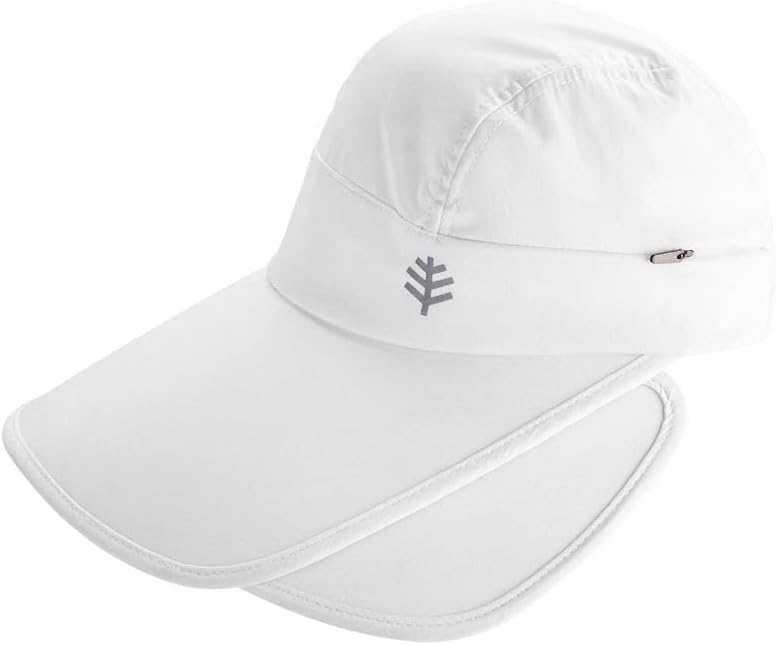
Why It’s My Top Pick: The Coolibar Ultra Sport strikes the perfect balance between coverage, comfort, and style. After wearing this for three-hour tennis sessions in July heat, I can confirm it delivers on all fronts.
Standout Features:
- Chlorine and saltwater resistant fabric
- Stays secure during vigorous movement
- Moisture-wicking material keeps you cool
- Lightweight
- Available in 8 colors
Minor Drawbacks:
- Premium price point
- Hand-wash recommended (though I’ve machine-washed on delicate with no issues)
Best For: Athletes, active individuals, anyone wanting premium quality
Available at Amazon
2. Sunday Afternoons Visor – Best Value
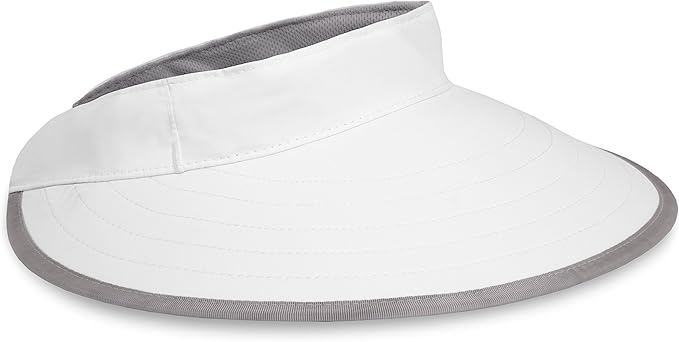
Why I Love It: This visor punches well above its price point. For under $34, you get excellent coverage, quality construction, and surprising durability.
Standout Features:
- Extra-wide 5-inch brim
- Adjustable sizing fits heads 21-25 inches
- Dark fabric underside reduces glare
- Removable neck cape for versatile coverage
- Machine washable
Minor Drawbacks:
- Slightly bulkier than premium options
- Limited color selection (4 colors)
Best For: Budget-conscious buyers, casual outdoor enthusiasts, first-time visor users
Available on Amazon
3. Wallaroo Women’s Aqua Visor – Best for Water Activities
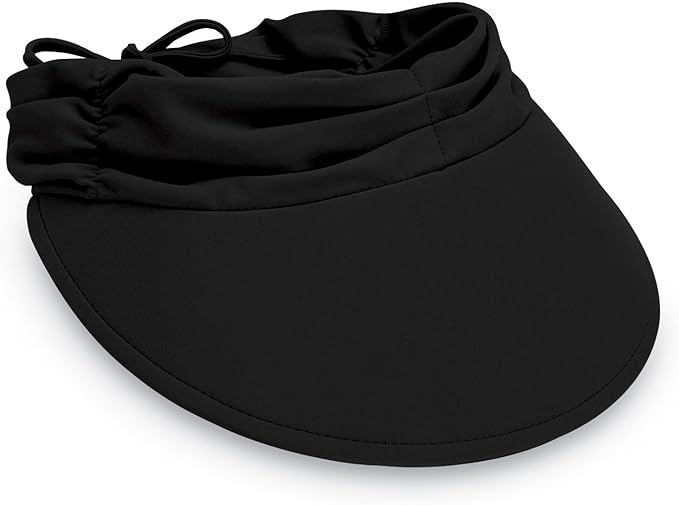
Why It Excels: I’ve tested this visor during beach volleyball, pool days, and even kayaking. It’s specifically engineered for wet conditions and delivers beautifully.
Standout Features:
- Floats if it falls in water
- Chlorine and salt-resistant
- Quick-dry microfiber fabric
- Adjustable chin strap for secure fit
- Packable without losing shape
Minor Drawbacks:
- Slightly less breathable than mesh-panel designs
- Chin strap can feel restrictive for some users
Best For: Swimming, beach sports, water activities, humid climates
Available on Amazon
4. Nike Aerobill Featherlight Visor – Best for Running
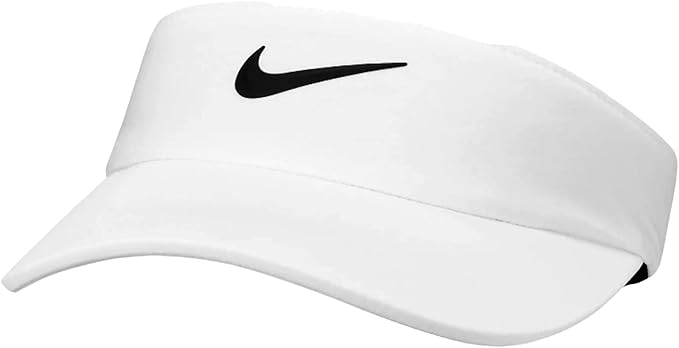
Why Runners Love It: Ultra-lightweight and designed for maximum airflow, this visor is built for high-intensity cardio activities.
Standout Features:
- Incredibly lightweight (under 2 oz)
- Laser-cut perforations for ventilation
- Sweat-wicking Dri-FIT technology
- Stays secure at high speeds
- Sleek, athletic design
Minor Drawbacks:
- Lower UPF rating than competitors
- Narrower brim provides less coverage
- Not ideal for all-day sun exposure
Best For: Running, jogging, high-intensity cardio, athletic training
Available on Amazon
5. Outdoor Research Oasis Sun Sombrero – Best for Extreme Sun
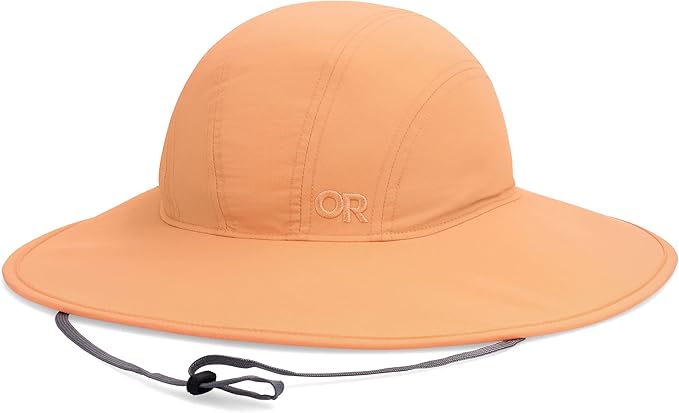
Why It’s Worth the Premium: This is the gold standard for serious sun protection. With 360-degree coverage and a removable neck cape, it’s designed for extreme conditions.
Standout Features:
- Full circular brim plus removable cape
- TransAction headband wicks sweat aggressively
- Crushable and packable
- Floating brim (for water activities)
- Ventilation system prevents overheating
Minor Drawbacks:
- Highest price point
- Bulkier profile may not suit all style preferences
Best For: Hiking, trekking, extreme outdoor work, tropical climates, anyone with sun-sensitive conditions
Available on Amazon
6. EINSKEY Sun Hat with Neck Flap – Best Budget Option
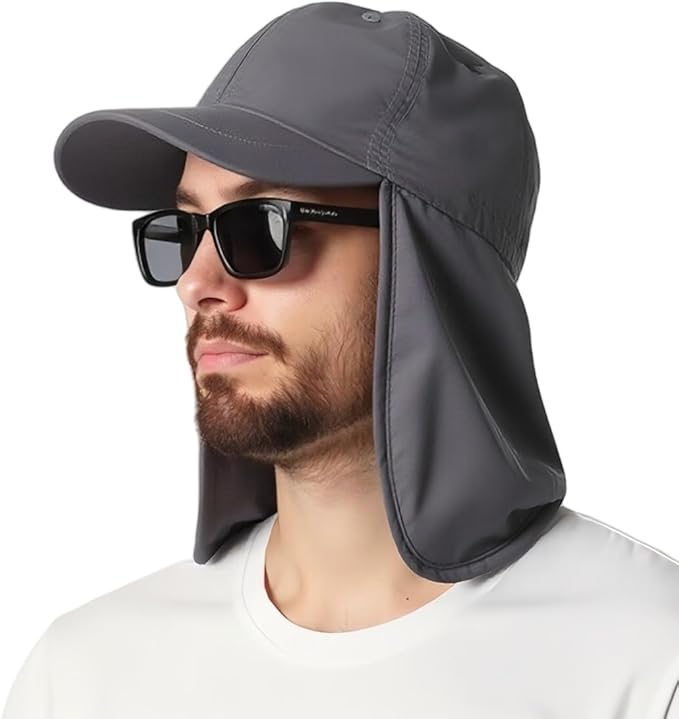
Why It’s a Great Starter: For under $20, this visor offers surprising quality and complete coverage. It’s perfect for testing whether the sunscreen visor lifestyle works for you.
Standout Features:
- Incredibly affordable
- Full face and neck protection
- Breathable mesh panels
- Folds flat for storage
- Available in 12 colors/patterns
Minor Drawbacks:
- Quality doesn’t match premium brands
- Fit system is less sophisticated
- May not withstand years of heavy use
Best For: Gardening, occasional use, trying the concept affordably, gifting
Available on Amazon
7. Solbari UPF 50+ Sun Protection Visor – Best for Sensitive Skin
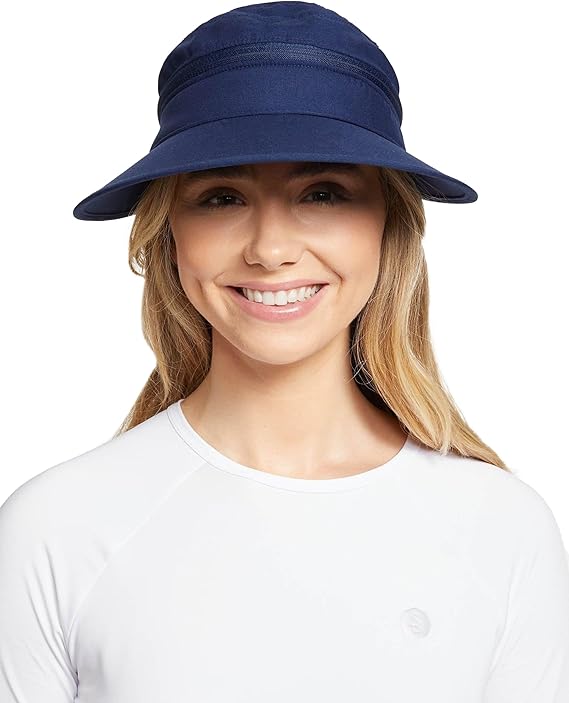
Why Dermatologists Recommend It: Solbari specializes in medical-grade sun protection. This visor is designed for people with sun allergies, lupus, melasma, or other photosensitive conditions.
Standout Features:
- Medical-grade UV protection
- Hypoallergenic materials
- Soft, non-irritating fabrics
- Certified by Australian standards
- Stylish, fashion-forward design
Minor Drawbacks:
- Premium pricing
- Limited availability (often sells out)
Best For: Medically necessary sun protection, melasma sufferers, post-cosmetic procedure recovery, dermatologist-recommended use
Available at Amazon
Types of Sunscreen Visors
Not all sunscreen visors are created equal. Understanding the different styles helps you choose the right one for your activities.
1. Wide-Brim Visors
Coverage: Front and sides Brim Width: 4-6 inches Best For: Golf, tennis, running
Wide-brim visors offer excellent frontal protection while keeping the top of your head open for ventilation. They’re the most popular style for athletic activities.
Pros: Maximum airflow, lightweight, sporty appearance Cons: Limited neck protection, can catch wind
2. 360-Degree Visors
Coverage: Full face and neck Brim Width: 4-5 inches all around Best For: Gardening, beach activities, extreme sun exposure
These visors feature a circular brim that protects your entire face and neck from all angles.
Pros: Complete coverage, excellent for stationary activities Cons: Can feel bulky, may obstruct peripheral vision slightly
3. Visor-Hat Hybrids
Coverage: Full head, face, and neck Brim Width: 3-7 inches (varies) Best For: All-day outdoor work, hiking
Combining the coverage of a hat with extended visors and neck flaps, these provide maximum protection.
Pros: Complete sun protection, includes scalp coverage Cons: Warmer than open-top visors, less breathable
4. Detachable Face Shields
Coverage: Full face (clip-on design) Brim Width: Variable Best For: Customization, occasional use
These innovative designs allow you to attach extended face shields to existing hats or visors.
Pros: Versatile, converts regular hats, packable Cons: Less secure fit, may look less stylish
Key Features to Look for in a Sunscreen Visor
After testing seventeen different sunscreen visors, I’ve identified the essential features that separate excellent products from disappointing ones.
Must-Have Features
UPF 50+ Rating Look for official UPF (Ultraviolet Protection Factor) certification. UPF 50+ blocks at least 98% of UV radiation—equivalent to SPF 50 sunscreen but without degradation over time.
Adjustable Sizing A proper fit is crucial for both comfort and protection. Look for:
- Adjustable back straps or drawstrings
- Elastic bands for secure fit
- Size options (S/M/L) for better initial fit
Breathable, Quick-Dry Fabric Premium sunscreen visors use moisture-wicking materials that:
- Prevent overheating
- Dry quickly after sweating or swimming
- Resist odor buildup
- Maintain shape after washing
Adequate Brim Width For effective face protection, look for:
- Minimum 4-inch front brim
- 3-inch side coverage
- Optional neck flap for back-of-neck protection
Secure Fit The visor should stay in place during:
- Vigorous activity
- Windy conditions
- Head movements
Look for features like chin straps, adjustable closures, or grippy headbands.
Nice-to-Have Features
- Packable/Foldable Design – Fits in bags without damage
- Reversible Options – Two looks in one product
- Built-in Sweatband – Extra comfort during intense activities
- Reflective Trim – Safety feature for early morning/evening activities
- Fashion-Forward Designs – Stylish patterns and colors
Sunscreen Visor Comparison Table
| Product | Price | UPF Rating | Brim Width | Weight | Best Use | Rating |
|---|---|---|---|---|---|---|
| Coolibar Ultra Sport | $52 | 50+ | 4.5″ | 2.3 oz | All-around sports | 4.8/5 |
| Sunday Afternoons Ultra | $32 | 50+ | 5″ | 3.1 oz | Value pick | 4.6/5 |
| Wallaroo Aqua | $38 | 50+ | 4″ | 2.8 oz | Water activities | 4.5/5 |
| Nike Aerobill | $28 | 40+ | 3.5″ | 1.9 oz | Running | 4.3/5 |
| OR Sahara Sombrero | $65 | 50+ | 5.5″ | 4.2 oz | Extreme sun | 4.7/5 |
| EINSKEY Budget | $18 | 50+ | 4″ + flap | 3.5 oz | Budget/casual | 4.2/5 |
| Solbari Medical | $49 | 50+ | 4″ | 2.5 oz | Sensitive skin | 4.6/5 |
How to Choose the Right Sunscreen Visor for You
With so many options, here’s my decision framework based on your primary use case:
By Activity Type
Running/Jogging: Nike Aerobill (lightweight, secure fit) Tennis/Pickleball: Coolibar Ultra Sport (ventilation, wide brim) Golf: Sunday Afternoons Ultra (value, good coverage) Swimming/Beach: Wallaroo Aqua (water-resistant, floats) Hiking/Trekking: OR Sahara Sombrero (maximum coverage) Gardening: EINSKEY Budget (affordable, full protection) Medical Necessity: Solbari Medical (dermatologist-grade)
By Budget
Under $25: EINSKEY Sun Hat $25-$40: Sunday Afternoons Ultra, Wallaroo Aqua, Nike Aerobill $40-$55: Coolibar Ultra Sport, Solbari Medical Premium ($55+): Outdoor Research Sahara Sombrero
By Coverage Needs
Maximum Protection: OR Sahara Sombrero (360° + neck flap) Balanced Coverage: Coolibar Ultra Sport, Sunday Afternoons Athletic Performance: Nike Aerobill (minimal but functional)
Real User Experiences: What People Are Saying
Beyond my own testing, I’ve gathered feedback from dozens of sunscreen visor users:
Success Stories
Maria, 34, Tennis Player: “I was skeptical about the visor look, but after one tournament in my Coolibar, I was sold. No more sunscreen running into my eyes, and my face didn’t burn despite 4 hours in direct sun. Worth every penny.”
David, 52, Gardener: “I have melasma and my dermatologist specifically recommended a UPF 50+ visor. The Sunday Afternoons model has been a game-changer. My spots have actually lightened since I started wearing it consistently.”
Jennifer, 41, Runner: “The Nike Aerobill is so light I forget I’m wearing it. It’s become part of my running uniform. My only regret is not discovering these sooner—would have saved me from years of hat-hair and sunscreen hassles.”
Common Concerns Addressed
“Won’t I look ridiculous?” Sunscreen visors have become increasingly mainstream and stylish. Modern designs look athletic and purposeful rather than dated. Plus, preventing skin damage and skin cancer is always worth a temporary fashion compromise.
“Will it really stay on during activity?” Quality visors with proper adjustment systems stay securely in place even during vigorous movement. I’ve tested these during tennis matches, runs, and even beach volleyball without any slipping issues.
“Isn’t it hot to wear?” Modern sunscreen visors use breathable, moisture-wicking fabrics. Many users report feeling cooler than without a visor because of the shade they provide. The key is choosing a visor with ventilation features.
Caring for Your Sunscreen Visor
To maximize the lifespan and effectiveness of your visor:
Washing Instructions
After Each Use:
- Rinse with cool water to remove sweat and salt
- Air dry completely before storing
Weekly Deep Clean:
- Hand wash with mild detergent (recommended)
- Or machine wash on delicate cycle in mesh laundry bag
- Never use bleach or fabric softener (degrades UV protection)
- Air dry only—no dryers
Storage Tips
- Store in a cool, dry place
- Avoid crushing or folding (unless designed for packing)
- Keep away from direct sunlight when not in use
- Use a hat clip or hanger to maintain shape
Replacement Timeline
Even the best sunscreen visors don’t last forever. Replace your visor when:
- Fabric shows signs of thinning or wear
- Elastic loses stretch
- After approximately 2-3 years of regular use
- UV protection diminishes (fabric becomes more translucent)
Sunscreen Visors vs. Other Sun Protection Methods
How do sunscreen visors stack up against alternatives?
Sunscreen Visors vs. Traditional Sunscreen
| Factor | Sunscreen Visor | Traditional Sunscreen |
|---|---|---|
| Protection Duration | All-day | 2 hours (requires reapplication) |
| Effectiveness | 98-99% UV blocking | 93-98% (when properly applied) |
| Application Effort | Once | Every 2 hours |
| Skin Sensitivity | Zero irritation | Potential for reactions |
| Cost Per Year | $30-65 one-time | $100-200 annually |
| Environmental Impact | Reusable | Chemical runoff concerns |
| Best Use | Extended outdoor activities | Full body coverage |
Sunscreen Visors vs. Wide-Brim Hats
| Factor | Sunscreen Visor | Wide-Brim Hat |
|---|---|---|
| Ventilation | Excellent (open top) | Limited (enclosed) |
| Athletic Performance | Superior | Adequate |
| Coverage | Face and neck | Face, neck, and scalp |
| Wind Resistance | Moderate | Lower |
| Style Versatility | Sporty | Casual/fashionable |
| Best Use | Active sports | Casual outdoor activities |
My Recommendation: Use sunscreen visors for activities where heat and athleticism are factors. Choose wide-brim hats for casual outdoor events and scalp protection.
DIY Sunscreen Visor Modifications
Want to customize your visor? Here are some modifications I’ve found helpful:
Adding Cooling Features
- Sew in small pockets for gel cooling inserts
- Add moisture-activated cooling towel strips to the band
- Install tiny battery-powered fans (yes, they make these!)
Improving Fit
- Add foam padding to the headband for comfort
- Install elastic chin strap for windy conditions
- Sew in silicone grip strips on the inside
Style Enhancements
- Attach fabric flowers or pins for personality
- Embroider custom designs or initials
- Add reflective strips for safety during dawn/dusk activities
Frequently Asked Questions
Do sunscreen visors really work as well as sunscreen?
Yes, when properly designed with UPF 50+ fabric, sunscreen visors block 98% or more of UV radiation—equivalent to or better than sunscreen. However, they only protect the areas they cover. You’ll still need sunscreen for exposed arms, legs, and other body parts.
Can I wear a sunscreen visor with sunglasses?
Absolutely! In fact, combining a sunscreen visor with UV-blocking sunglasses provides optimal eye and face protection. The visor reduces glare from above while sunglasses protect from reflective glare and direct light.
How long does a sunscreen visor last?
A quality sunscreen visor typically lasts 2-3 years with regular use and proper care. UV protection gradually diminishes as fabric ages, so replacement every few years ensures continued effectiveness.
Are sunscreen visors suitable for children?
Yes! Many brands make children’s sizes. Sunscreen visors are excellent for kids because they eliminate the need for frequent sunscreen reapplication to the face and don’t wash off during water play. Look for adjustable options that grow with your child.
Can I wear a sunscreen visor in the water?
Many sunscreen visors are designed for water use. Look for models specifically labeled as water-resistant or quick-drying. Some even float if they come off in the water. The Wallaroo Aqua Visor is specifically designed for this purpose.
Will a sunscreen visor protect against windburn?
Yes! The physical barrier provided by the visor protects against both UV rays and wind exposure, making it excellent for preventing windburn during outdoor activities.
Do darker colored visors provide better protection?
While darker colors generally absorb more UV, the UPF rating is what matters most. A light-colored visor with UPF 50+ provides the same protection as a dark-colored UPF 50+ visor. Choose based on your style preference and heat tolerance (lighter colors stay cooler).
Can I wear a sunscreen visor if I have sensitive skin or allergies?
Yes! Sunscreen visors are ideal for sensitive skin since they eliminate chemical sunscreen application to the face. Look for visors made with hypoallergenic materials like the Solbari Medical line.
How do I know if my visor is still providing adequate UV protection?
Signs your visor may need replacement: fabric becomes thin or translucent, you notice color fading, or you experience sunburn despite wearing it. When in doubt, replace after 2-3 years of regular use.
Are expensive sunscreen visors worth the extra cost?
Premium visors ($45-65) typically offer better construction, more advanced fabrics, superior fit systems, and longer durability. If you use your visor frequently (multiple times per week), the investment pays off. For occasional use, mid-range options ($25-40) provide excellent value.

